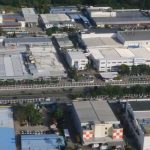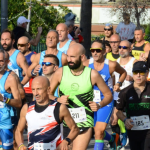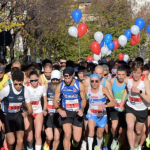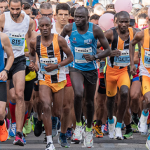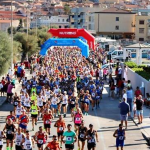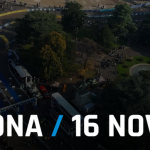Enforcement of legal guidelines against onerous medication is prioritized in Pakistan, while the private use of cannabis is usually neglected. After an explosion of laborious drugs authorities began to tolerate smooth medicine and legalized cannabis selling in registered coffeeshops. Organizing for the initiative started in August 2019 by the Arizona Dispensaries Association and Arizona Cannabis Chamber of Commerce. The sixth-technology CR-V was launched at the 30th Gaikindo Indonesia International Auto Show on 10 August 2023. It is accessible in two grades: 1.5L Turbo and 2.0L RS e:HEV. Two models have been proposed for the mechanism of anthocyanin transport from the ER to the vacuole storage sites: the ligandin transport and the vesicular transport (Grotewold and Davis, 2008; Zhao and Dixon, 2010). The ligandin transport mannequin is predicated on genetic proof exhibiting that glutathione transferase (GST)-like proteins are required for vacuolar sequestration of pigments in maize, petunia and Arabidopsis (AtTT19) (Marrs et al., 1995; Alfenito et al., 1998). The vacuolar sequestration of anthocyanins in maize requires a multidrug resistance associated protein-kind (MRP) transporter on the tonoplast membrane, which expression is co-regulated with the structural anthocyanin genes (Goodman et al., 2004). MRP proteins are often referred as glutathione S-X (GS-X) pumps as a result of they transport a variety of glutathione conjugates.
Zhao, J., and Dixon, R. A. (2010). The ‘ins’ and ‘outs’ of flavonoid transport. Zhang, J., Subramanian, S., ????? ?????? Stacey, G., and Yu, O. (2009). Flavones and flavonols play distinct important roles during nodulation of Medicago truncatula by Sinorhizobium meliloti. Subramanian, S., Stacey, G., and Yu, O. (2006). Endogenous isoflavones are important for the institution of symbiosis between soybean and Bradyrhizobium japonicum. Ryan, K. G., Swinny, ??????? E. E., Markham, K. R., and Winefield, C. (2002). Flavonoid gene expression and UV photoprotection in transgenic and mutant Petunia leaves. Pourcel, L., Irani, N. G., Lu, Y., Riedl, K., Schwartz, S., and Grotewold, E. (2010). The formation of anthocyanic vacuolar inclusions in Arabidopsis thaliana and implications for the sequestration of anthocyanin pigments. Pollak, P. E., Vogt, T., Mo, ?????? ??????? ????? Y., and Taylor, L. P. (1993). Chalcone synthase and flavonol accumulation in stigmas and anthers of Petunia hybrida. Stracke, R., Jahns, O., Keck, ?????? ????? M., Tohge, T., Niehaus, K., Fernie, A. R., and Weisshaar, B. (2010). Analysis of Production OF FLAVONOL GLYCOSIDES-dependent flavonol glycoside accumulation in Arabidopsis thaliana plants reveals MYB11-, MYB12- and MYB111-independent flavonol glycoside accumulation. Zou, J., Rodriguez-Zas, S., Aldea, M., Li, M., Zhu, J., Gonzalez, D. O., Vodkin, L. O., Delucia, E., and Clough, S. J. (2005). Expression profiling soybean response to Pseudomonas syringae reveals new protection-associated genes and rapid HR-specific downregulation of photosynthesis.
Ylstra, B., Muskens, M., and Tunen, A. J. (1996). Flavonols are not important for fertilization in Arabidopsis thaliana. Preuss, A., Stracke, R., Weisshaar, B., ?????? ??????? ???? Hillebrecht, A., Matern, U., and Martens, S. (2009). Arabidopsis thaliana expresses a second practical flavonol synthase. Owens, D. K., Alerding, A. B., Crosby, K. C., Bandara, A. B., Westwood, J. H., and Winkel, B. S. J. (2008). Functional evaluation of a predicted flavonol synthase gene household in Arabidopsis. Saslowsky, D. E., Warek, U., and Winkel, B. S. (2005). Nuclear localization of flavonoid enzymes in Arabidopsis. However, because anthocyanin-glutathione conjugate(s) haven’t been discovered, it’s proposed that these GSTs might ship their flavonoid substrates directly to the transporter, appearing as a service protein or ligandin (Koes et al., 2005). This hypothesis is supported by the fact that Arabidopsis’ GST (TT19), localized each within the cytoplasm and the tonoplast, can bind to glycosylated anthocyanins and aglycones however does not conjugate these compounds with glutathione (Sun et al., 2012). The vesicle-mediated transport mannequin proposed relies on observations that anthocyanins and other flavonoids accumulate within the cytoplasm in discrete vesicle-like buildings (anthocyanoplasts), after which they is likely to be imported into the vacuole by an autophagic mechanism (Pourcel et al., 2010). Nevertheless, grape vesicle-mediated transport of anthocyanins includes a GST and two multidrug and toxic compound extrusion-sort transporters (anthoMATEs).
An interesting facet of utilizing Arabidopsis for studying flavonoid biosynthesis is that single copy genes encode all enzymes of the central flavonoid metabolism, with the exception of flavonol synthase (FLS), which is encoded by six genes, but solely two (FLS1 and FLS3) have demonstrated exercise (Owens et al., 2008; Preuss et al., 2009). Genetic loci for each structural and regulatory genes have been recognized largely based on mutations that abolish or scale back seed coat pigmentation; thus, the loci have been named clear testa or tt mutants (Koornneef, 1990; Borevitz et al., 2000). Consequently, many of the structural genes, as well as a lot of regulatory genes, have been correlated with particular mutant loci in Arabidopsis. In Arabidopsis, TT2, TT8, and TTG1 type a ternary complex and activate proanthocyanidin biosynthesis in creating seeds, while, TTG1, a WD40 transcription issue, completely different bHLH (TT8, GL3, and EGL3) and MYB transcription components (PAP1 and PAP2) work together to activate anthocyanin synthesis in vegetative tissues (Figure (Figure2A)2A) (Baudry et al., 2004; Feller et al., 2011). In maize, MYB and bHLH proteins are encoded by two multigene households (PL/C1 and B/R, respectively), and every member has a tissue- and developmental-specific pattern, whereas a WD40 protein PAC1 is required by each B1 or R1 proteins for full activation of anthocyanin biosynthetic genes in seeds and roots (Figure (Figure2B)2B) (Carey et al., 2004). Functional Arabidopsis TTG1 is required for anthocyanin accumulation throughout roots and trichomes improvement (Galway et al., 1994), and maize PAC1 can complement Arabidopsis ttg1 mutants; however, maize pac1 mutants solely present a reduction in anthocyanin pigmentation in specific tissues (Carey et al., 2004). Even more, the regulation of flavonol biosynthesis exhibit important variations between each species.

